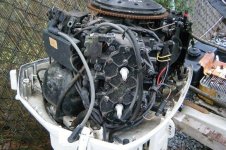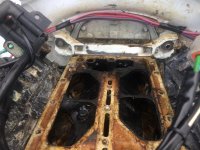What is the EASIEST method to access the thermostat cover bolts? As I understand the service manual it is done while the power head is removed. I do not have the luxury of the equipment / shop environment or experience to tackle such 'extensive' repair. I have watched a "YouTube" video of an owner who cut an opening in the lower cowling to access the cover bolts and afterwards replaced the cut out piece with the help of some BJ Weld. This seems to me to be the easiest way possible for someone with limited resources.
https://www.youtube.com/watch?v=ms7S-sUocwc&t=389s
I guess my concern is what is the possible and unforeseen downside of weakening the lower cowl in this way .. other than cosmetic? Is there a better "EASY" way?
https://www.youtube.com/watch?v=ms7S-sUocwc&t=389s
I guess my concern is what is the possible and unforeseen downside of weakening the lower cowl in this way .. other than cosmetic? Is there a better "EASY" way?



